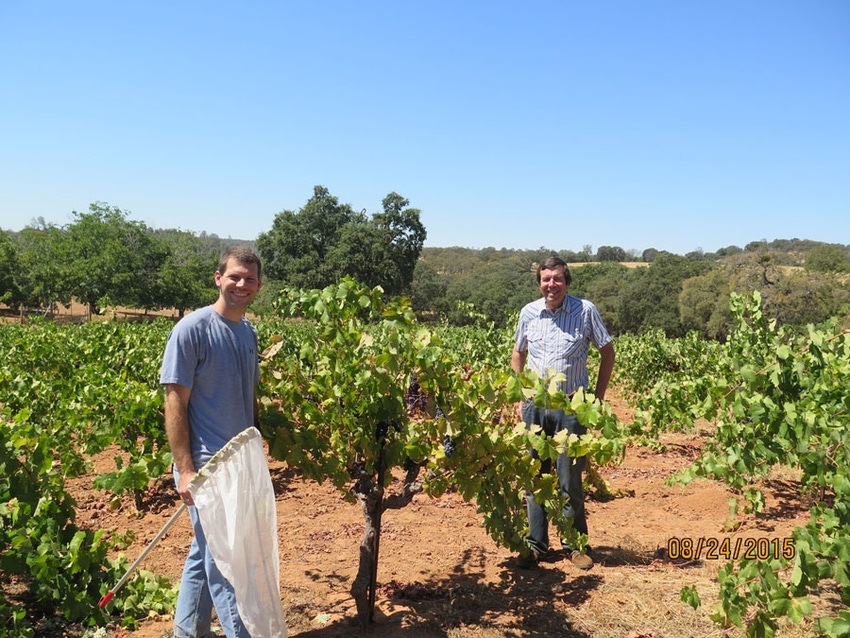March 4, 2016

University of California researchers recently confirmed a vector responsible for red blotch virus in grapes.
Brian Bahder, a UC Davis Entomology post-doc, and Frank Zalom, a UC Davis Entomology Professor, made the exciting revelation during a recent webinar: they confirmed the three-cornered alfalfa treehopper (Spissistilus festinus) as able to transmit Red Blotch Associated Virus (RBaV) to grapevines in greenhouse tests. Their discovery is the first confirmation of a vector for RBaV.
Badher and Zalom have been working as a team with Mysore “Sudhi” Sudarshana, a virologist with the U.S. Department of Agriculture, and several farm advisors and UC researchers, including Rhonda Smith, UCCE Sonoma County; Mike Anderson, Oakville station; and myself, to monitor and map vineyards where patterns of red blotch spread are evident.
Bahder narrowed the candidates of suspect vectors to those insects he found in common present in vineyards with pattern of red blotch spread from locations across the state. He then conducted arduous greenhouse tests consisting of rearing suspect vectors in completely virus free cages; placing them on RBaV infected vines, and moving them, a single insect per cage, onto virus-free vines to allow them to feed and possibly infect.
He then used a highly sensitive Polymerase Chain Reaction (PCR) test, which allows detection of very small amounts of virus, to look for virus periodically in the vines after insect feeding. He found the virus in his greenhouse controlled vines that the three cornered alfalfa leafhopper had fed on four months after initial feeding (and transmission) took place.
Very little is known about the feeding habits and biology of the three-cornered alfalfa treehopper, but you can bet all that is about to change. What we do know is that the insect prefers other plants, such as alfalfa, grasses and legumes, to feed on; and spends very little time feeding on grapevines.
The treehopper has been known to cause minor damage to grapevine leaf petioles in the foothills and North Coast, girdling the petioles and then causing just one leaf to turn red.
I plan on doing some sweep net surveys of groundcovers to determine if there are any treehoppers overwintering as adults. We already know they overwinter as eggs.
Bahder and Zalom noted that the treehopper may not be the only species capable of transmitting RBaV; they plan on continuing their studies of other insect vector candidates.
The Red Blotch webinar was a huge success, with over 300 participants online and a wealth of expert information on the disease. For those of you who missed it, I will let you know when the webinar is posted online.
The Foothill Fodder blog is available online.
For the latest on western agriculture, please check out Western Farm Press Daily and receive the latest news right to your inbox.
You May Also Like




